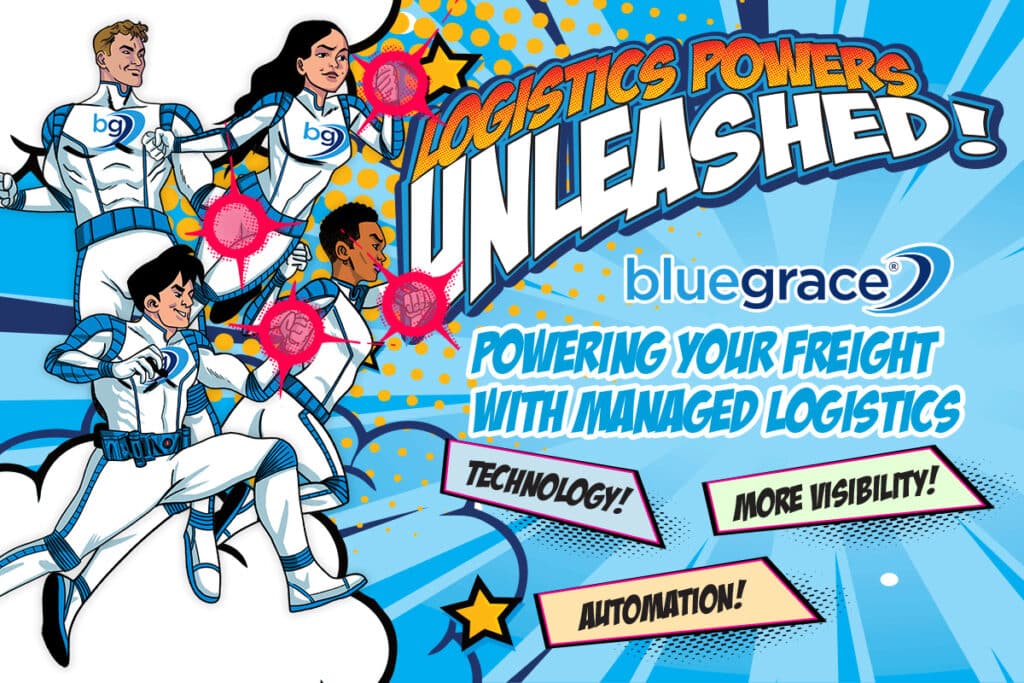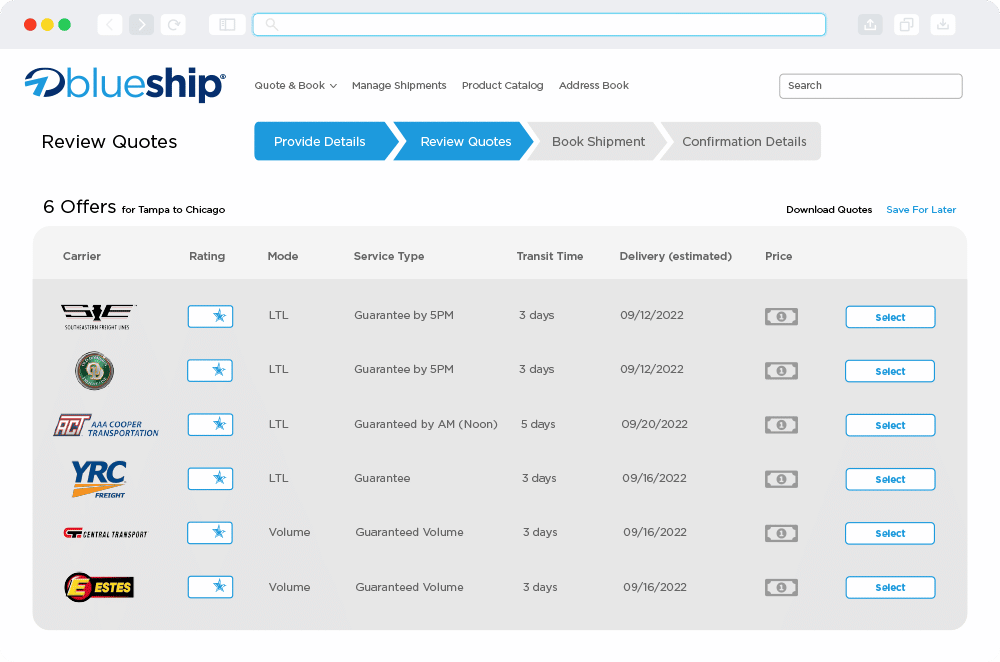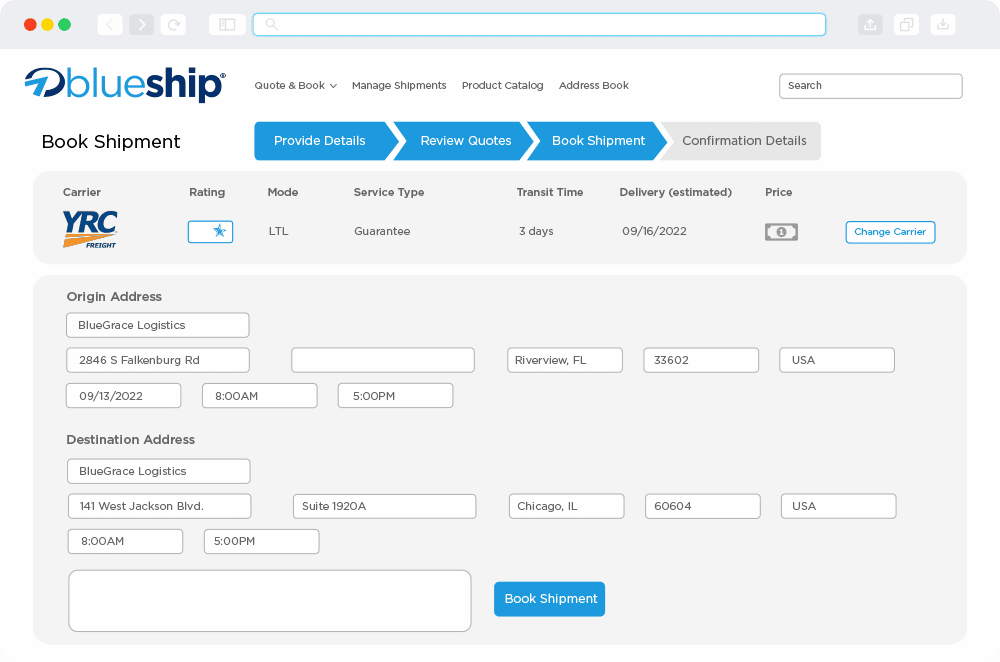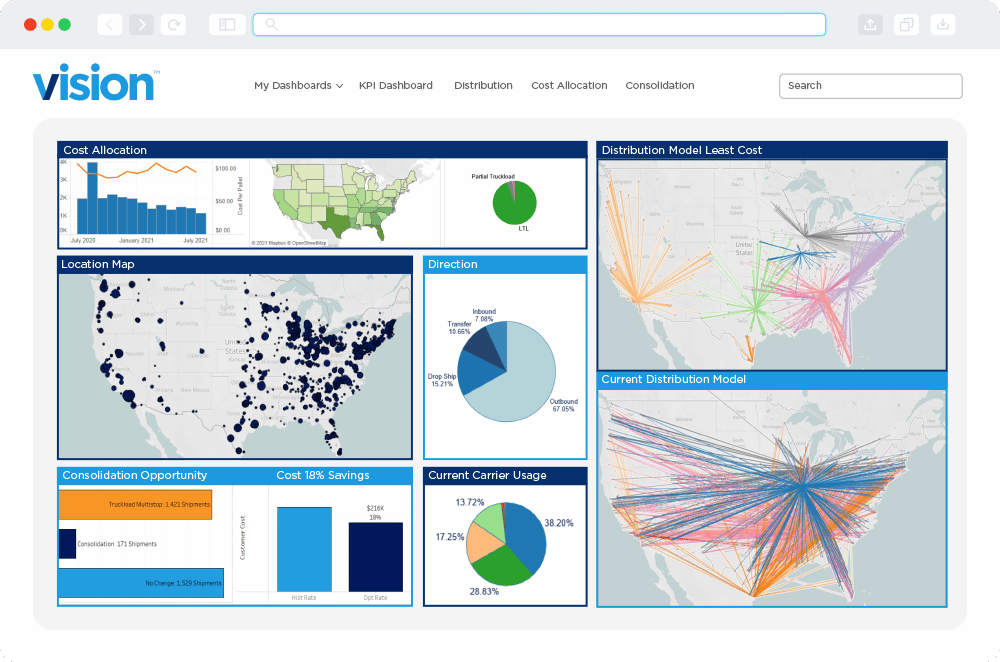
LTL vs FTL: Which Freight Shipping Method Suits Your Business Goals?
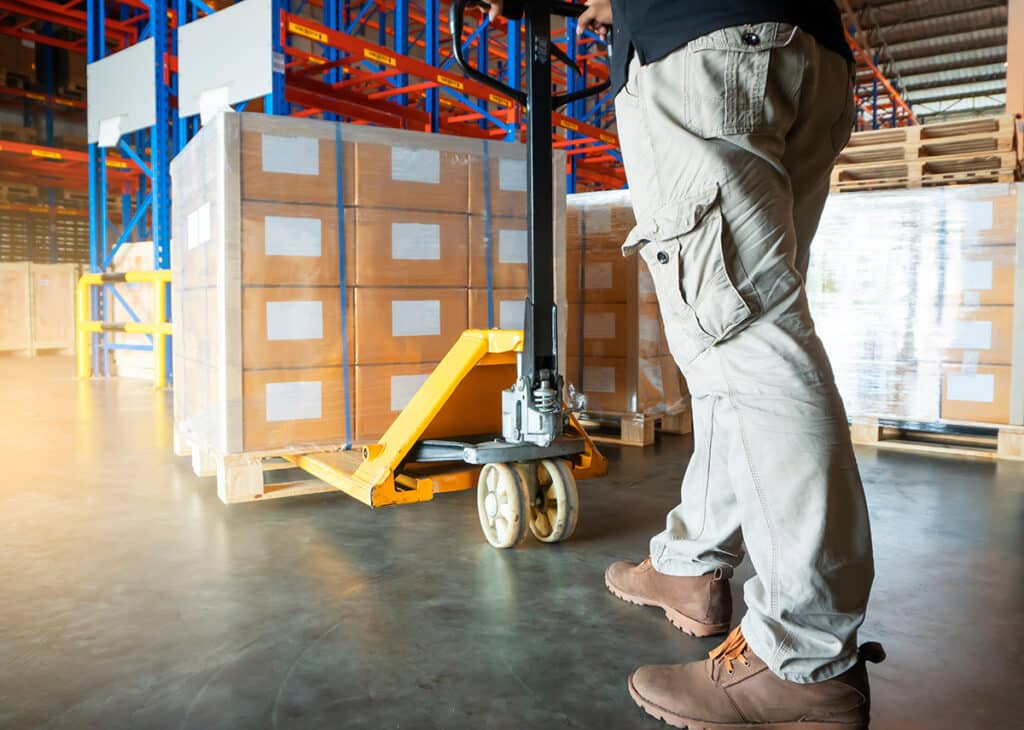
Trucks are responsible for moving the vast majority of the nation’s freight. Trucks are nearly always the foundation of any corporate logistics operation. This makes the effective management of truckload freight critical to organizational success. Have you perfected your shipping strategy? If not, you could be losing thousands of dollars. Inefficiencies can create additional costs and make it difficult for your business to achieve growth.
The issue at the heart of freight shipping is deciding between less-than-truckload shipping (LTL) and full truckload shipping (FTL). At BlueGrace, we are passionate about giving you the services and support you need to ensure that your logistics operations never hold you back. That’s why this guide was created, to help you identify the pros and cons of LTL vs. FTL shipping.
In this article, we’ll compare costs, transit times, and handling to help you align your shipping strategy to your business goals.
Defining LTL vs FTL
LTL, meaning less-than-truckload shipping, is a mode of freight transportation used to move smaller quantities of goods that take up less physical space than a full truck.
Get Started with a Free Freight Quote
This restricts LTL shipping to smaller load sizes and less capacity. On the other hand, LTL freight shipping also combines multiple shipments from different customers into a single truckload, creating greater transportation efficiency and reduced costs.
FTL, meaning full truckload freight, by contrast, is a form of freight transportation that utilizes the full capacity of a truck trailer. With FTL, you get greater flexibility in terms of load size and greater capacity. Because a single customer occupies the entire truck, organizations can enjoy faster transit times, reduced handling costs, and potentially fewer opportunities for damage. The main trade-off here is the increased cost. These are the overall definitions of LTL and FTL shipping. Now, we’ll go into the specific details regarding these two logistics strategies so that you can determine which is best for your business.
Comparing LTL vs FTL: Key Characteristics
The key characteristics of these two shipping methods are pivotal in determining which one aligns best with your business needs. Understanding these characteristics is the first step in making an informed decision that can impact your logistics, cost-efficiency, and customer satisfaction. Below, we break down each category, demonstrating the main differences between LTL and FTL freight.
1. Load Size and Utilization
The ideal load size for LTL freight is generally between 150 and 15,000 pounds in weight. The length of an LTL shipment is usually less than 12 linear feet and ranges in size from 1 to 6 pallets in size. This method is ideal for smaller freight that would benefit from the more affordable shipping costs.
By contrast, FTL shipments will typically be greater than ten pallets in size and will often range in total weight from 15,000 to 20,000 pounds. Companies that opt for FTL as a shipping method will need to ensure that they are able to schedule their shipments to completely fill each truck. Otherwise, you will end up paying for unused space.
2. Cost Efficiency
When comparing the cost structures of LTL and FTL freight shipment, consider how each method determines pricing. LTL shipments typically have a lower cost per pound but may have additional fees for fuel, accessorial charges, and pick-up/delivery services.
In contrast, FTL shipments have a higher base rate but may not have as many additional fees. However, larger loads requiring an entire trailer generally make FTL shipments more cost-effective, whereas LTL shipments can combine with other shipments to reduce overall transportation costs. Ultimately, the cost structures of LTL and FTL shipments depend on factors such as distance, weight, size, and additional services required.
3. Transit Time and Delivery Flexibility
In terms of transit times, FTL generally achieves faster transit times than LTL because it dedicates the truck to one shipment and eliminates the need for multiple stops. FTL also provides more delivery flexibility because it can deliver the shipment directly to the destination without any additional stops.
LTL provides more cost savings by combining the shipment with others, resulting in shared transportation costs. LTL also offers greater flexibility in terms of pickup and delivery times, allowing pickups and deliveries at any time.
FTL excels in situations like when a company needs to ship a large quantity of cargo to a single destination, such as when a manufacturer ships a large order of products to a warehouse.
LTL excels in situations like when a company needs to ship smaller quantities of cargo to multiple destinations, such as when a distributor ships products to multiple retailers.
4. Handling and Risk Factors
Generally, FTL shipments face a lower risk of damage or loss during transit. This is because the cargo is loaded onto the truck and secured in place for the entire duration of the trip. This is different from LTL shipments, where the cargo is combined with other businesses shipments. LTL trucks move to various locations before arriving at their destination. At several stops, handlers might unload other orders. These processes increase the number of handling activities and increase the potential risks of damage or loss. However, reputable LTL carriers have strict handling procedures to minimize any chances of damage coming to client property.
LTL vs FTL: Scenarios and Suitability
In order to better understand these two methods of shipment, let’s look at the specific scenarios that would be suitable for each method.
Firstly, LTL shines when used by businesses with smaller shipment volumes or flexible delivery schedules. This method offers frequent shipping options, with trucks making multiple stops en route to their final destination. This creates opportunities for businesses to move their assets even if they only have a small amount of cargo to ship.
FTL, by contrast, is better suited to organizations that need to transport large-volume shipments. It’s especially well-suited for time-sensitive deliveries or situations with specialized requirements. FTL empowers you to exercise greater control over what you ship, enabling customization such as transporting perishables with refrigerated trucks. Such shipments often need full truckload, due to the challenge of accommodating various orders on a single truck.
Shipments that require reduced handling and shorter transit times are also ideal for FTL.
Choosing LTL vs FTL Based on Business Goals
When it comes to freight shipping, one size does not fit all. The decision between LTL and FTL isn’t just about the nature of your cargo; it’s also about aligning your choice with your overarching business objectives. Your shipping method should seamlessly integrate with your goals, optimizing both economic and operational efficiency.
In this section, we’ll explore how your company’s goals directly impact the choice between these two methods. Each category: cost-effectiveness, delivery speed, and inventory management, will illustrate how tailoring your decision to your unique objectives can be the key to success.
Business Goal 1: Cost-Effectiveness
When it comes to cost-effectiveness, selecting the right shipping method can significantly impact your bottom line. If you ship LTL, the cost is typically calculated based on the weight and dimensions of the shipment, as well as the distance it needs to travel. This calculation also takes into account the assigned freight class, which reflects the nature of the items being shipped. FTL shipments involve pricing based on travel distance and specific truck requirements (like a refrigerated truck for perishable items).
Generally, if budgets are tight and your shipments are smaller, LTL is going to be the best option when it comes to affordability. However, if you’re facing tight deadlines with larger shipments, using FTL freight is going to be the most cost-effective choice, especially if you fill the entire trailer.
Business Goal 2: Delivery Speed
The speed of deliveries plays a pivotal role in customer satisfaction and overall business success. Transit times matter, and your choice between LTL and FTL can impact your ability to meet customer expectations.
FTL is a preferred choice when swift deliveries are necessary, ensuring your products reach customers quickly. However, it’s essential to strike a balance between speed and cost considerations. In contrast, LTL shipments offer a more flexible schedule, as they involve multiple stops along the route. Ultimately, the key tradeoff here is the difference between speed and affordability.
Business Goal 3: Inventory Management
When it comes to inventory planning, shipment volume and frequency are crucial factors to consider. Knowing how much and how often products ship can help determine the most suitable shipping method.
For example, if the shipment volume is small and infrequent, less-than-truckload (LTL) shipping may be the best option. On the other hand, if the shipment volume is large and frequent, full truckload (FTL) shipping may be more suitable. By taking these factors into account, businesses can optimize their inventory management and ensure timely delivery of their products.
Selecting The Right Shipping Method
Choosing the right freight shipping method for your business requires careful consideration of shipment volume and frequency. By understanding these factors, you can select the most suitable shipping method that aligns with your business goals and ensures the timely delivery of your products.
Making well-informed decisions about your shipping strategies can help optimize your inventory management, reduce costs, and improve customer satisfaction. Take advantage of the insights gained from this information to make the most of your shipping resources and achieve your business objectives. Blue Grace Logistics can help you with your freight needs, whether you need FTL, LTL, or a combination of both. Get a free freight quote today!
Related Posts
LTL Toolkit: Fastest Ways to Save on LTL Shipping
LTL Toolkit: Fastest Ways to Save on LTL Shipping
View Whitepaper
The Great Divide: Understanding LTL and Truckload Market Shifts
The Great Divide: Understanding LTL and Truckload Market Shifts
Read News
LTL Shipping: 10 Common Mistakes and How to Avoid Them
LTL Shipping: 10 Common Mistakes and How to Avoid Them
View The Logistics Blog®
